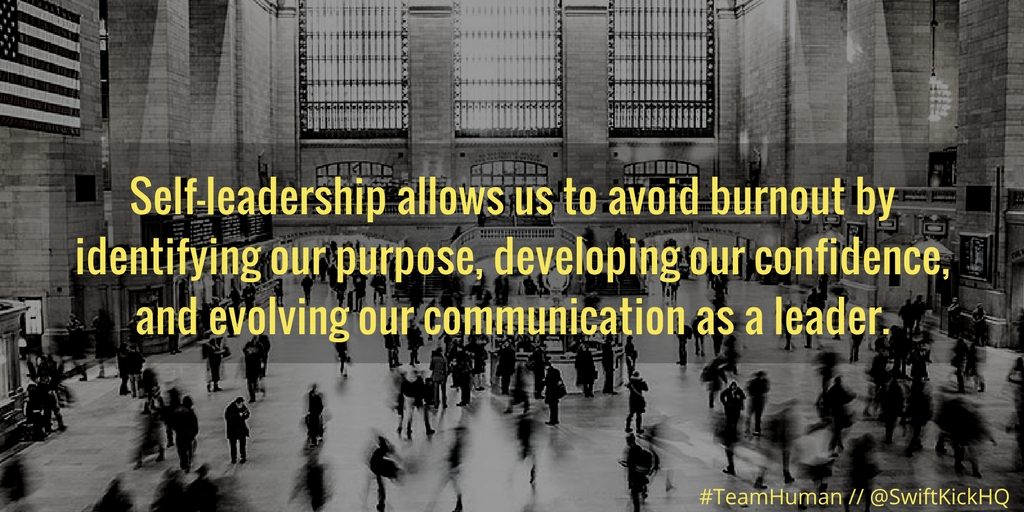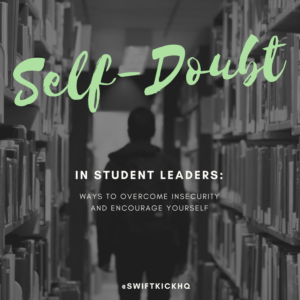My calendar is booked up a week in advance. With my classes, clubs, internships, and social gathering, I don’t often find myself slowing down the pace. At the time I am writing this, I just came from a scheduled 1-hour dinner with friends and before that, it was a photoshoot for a marketing venture. After I finish writing, I will run back to my residence hall, quickly change into a suit, so my roommate can take my headshot, and then I have a to-do list of 20 items that need to be checked off before bedtime which is in 4 and a half hours.
Even writing that out made me feel anxious.
We all practice leadership every single day. Some of us practice leadership in small bites, and some of us take on everything we can put on our plate. Through the high demands, we have so much placed on our shoulders that we put all our energy and resources into solving problems and serving others.
Leaders often fail to tend to themselves. They then are unable to help others because of self-inflicted burnout and exhaustion. While we are leading others forward, we are driving ourselves straight into the ground. Eventually, we must realize that leadership is not only about leading others, but it is also about leading ourselves. This is why companies like Catalyst 14 exist, as they also know the importance of good leadership skills.
Self-leadership
Self-leadership is a way that you can look after the one person who is by your side 100% of the time: YOU! It’s when we influence ourselves to achieve self-direction and self-motivation. As leaders with a lot on our shoulders, a substantial amount of followers, and tons of responsibilities, we need to perform at the highest level possible. Of course, we could just try harder, put in overtime, or multitask, but this will only increase the likelihood of burnout. We will be like an unhealthy doctor, tending to everyone’s illnesses but never taking time to take care of our own.
Last night, I finally snapped and had a mild panic attack because I was so overwhelmed. This whole week I have been off my A game. Some of my friends even asked me if I was doing okay because they saw how drained I have been.
Self-leadership allows us to avoid burnout by identifying our purpose, developing our confidence, and evolving our communication as a leader (Chung et. al.). There are three ways we can practice self-leadership to avoid burnout.
1. Spirituality
Spirituality consists of our values, and how we emotionally connect, uphold, and develop them. The most simplistic form of spirituality is when we live a value-driven life.
The act of labeling a value such as, passion, family, and love lets us clearly identify what our default motivations are. When we don’t know our motivations, we might not be able to understand the actions we need to take to achieve our goals (Godwin et. al.). We would lead without a destination, and people would blindly follow us, ultimately ending up nowhere. Spirituality identifies who we are, what we value, and where we want to go.
I keep my values written on my mirror, so I see them every morning. They are gratitude, growth, and passion.
What are your values? Identify 3 of your values and write them down in a place you will see every day.
2. Confidence
People believe in people who believe in themselves. If a leader does not have strong enough beliefs, their followership might doubt the possibility of success and ultimately stop being influenced by the leader. The more confidence we have, the more likely a follower will be influenced (Axelrod).
In sports psychology, basketball players imagine themselves shooting hundreds of free throw shots in a row. For hours, they see themselves scoring repeatedly. In their mind; they never miss. When they go out to practice, the athletes that have obsessively imagined this positive mental imagery make more goals than those who solely relied on physical training. Mental imagery is when we continuously imagine ourselves performing and succeeding in a chosen activity (Godwin et al.). The more a leader rehearses the perfect execution of team facilitation, the better facilitation there will be because their confidence increases. Therefore, we can become more confident by mentally rehearsing our leadership.
What is something that you could be just a little more confident at? Can you use the power of mental imagery to practice or visualize your success? If you can practice in real life, that would be great too. The basketball players had the best results when they practiced both in their heads and on the court.
3. Authenticity
With the practice of self-leadership, we can internalize, identify, and then act on the same frequency. Our thoughts, words, and actions are aligned. That alignment is defined as authenticity. Authentic people have less self-doubt, more certainty, and less tension because of the congruency within themselves. An authentic leader can communicate, inform, guide, and inspire because of the clarity of the message conveyed. An authentic leader is more willing to open and share themselves, creating a more effective message.
Unfortunately, you can’t actively try to be more authentic. If you try to be authentic, that in itself is inauthentic. So, the best way to go about this is by gaining clarity of our values and actively living our life with them in mind. Authenticity is a way to measure the effectiveness of the first two practices and it is how we can avoid burnout.
A leader must lead themselves so they can lead others
Today I took time to relax. After my first class, I ate lunch and read a book. This action reflects my growth value. I created a list of things I was grateful for, and I talked to a friend about goal setting-something I am passionate about.
The relationship between self-leadership and leadership is like the chicken and the egg debate; there is no conclusion as to which came first. We must practice self-leadership, so we don’t get burnt out from leadership. It is a never ending cycle. When you become grounded in your values and act with certainty, leadership becomes easy. Your authenticity allows for less resistance, which means less burnout.
Sources:
Axelrod, Ruth H. “Leadership and Self-Confidence.” Leadership Today, vol. 1, no. 1, 2017, pp. 297–313., doi:10.1007/978-3-319-31036-7_17.
Chung, Anyi, et al. “Charismatic Leadership and Self-Leadership.” Journal of Organizational Change Management, vol. 24, no. 3, 2011, pp. 299–313., doi:10.1108/09534811111132703. Accessed 13 Apr. 2017.
Godwin, Jeffrey L., et al. “Self-Leadership, Spirituality, and Entrepreneur Performance: A Conceptual Model.” Journal of Management, Spirituality & Religion, vol. 13, no. 1, Feb. 2016, pp. 64–78., doi:10.1080/14766086.2015.1122546. Accessed 13 Apr. 2017.




